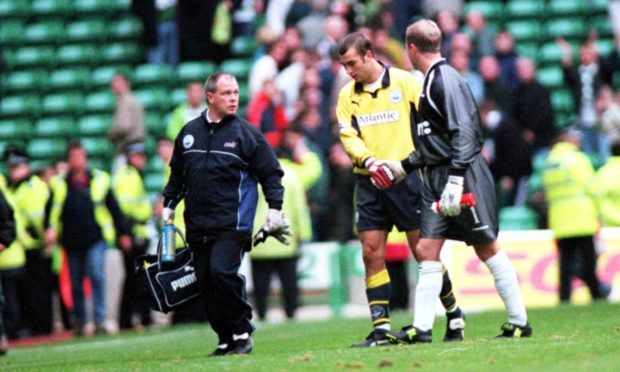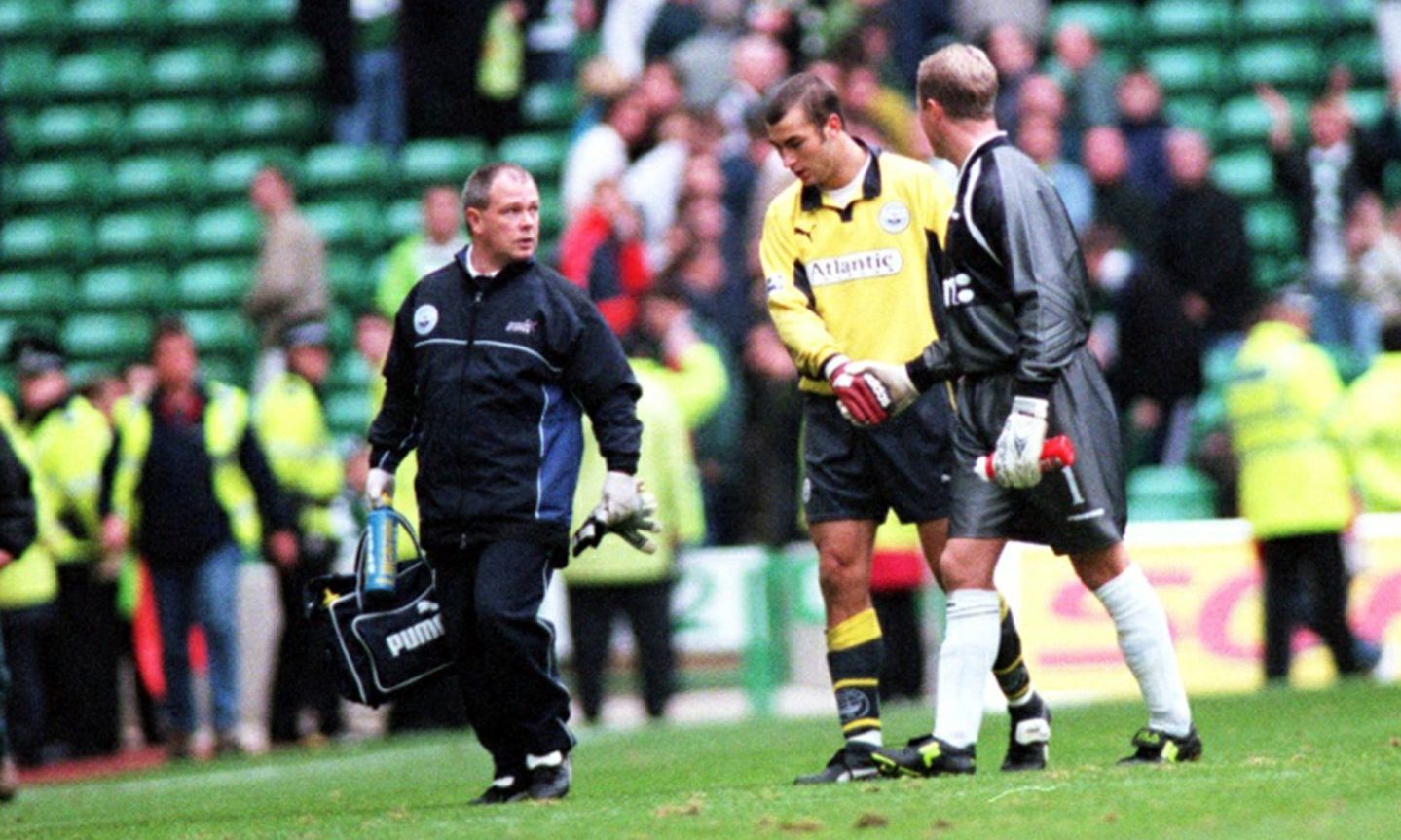Former Aberdeen goalkeeper David Preece says he is “fearful” of the long-term effects of concussions suffered during his playing career.
The potential for multiple head injuries to have serious consequences for sports people has been a growing concern.
Chronic traumatic encephalopathy (CTE) has destroyed the lives of many former American football players, and was the subject of the 2015 movie Concussion, while multiple members of England’s 1966 football World Cup-winning side, including Jack Charlton, Martin Peters and Nobby Stiles, have passed away after being diagnosed with dementia.
In the last few weeks, several former rugby union internationals have launched legal action against three of the game’s governing bodies for failing to protect them from brain damage.
Preece, 44, who played for the Dons between 1999 and 2006, and suffered multiple concussions during his career, including incidents in games for Aberdeen against Celtic and Livingston, told our Northern Goal podcast he has already seen the ill-effects of his head injuries and is “fearful of what might happen down the line”.
He said: “I’m very fearful.
“It’s only been the last couple of years I’ve started thinking I need to look into it a bit more. I’ve looked into CTE – all the big cases in America with the NFL. I know things have changed slightly now and I think they can diagnose CTE now through scans, but up until a year ago they could only diagnose CTE through post-mortem.
“I know a lot of these players from the NFL have suffered manic depression and cognitive disorders.
“It has made me fearful as I can recognise a lot of that; my missus can recognise a lot of that.
“Especially in the last few years, mood swings have been a bit more noticeable, my memory is absolutely terrible. This is to the point where she thinks I’m joking about it.
“She’ll tell me something and I immediately forget it. She thinks I’m just not listening to her, but she knows the history and that it could all be down to what’s happened to me in the past.
“At the time, you wear it as a badge of honour and want to get back to training straight away and prove ‘I’m tough’. Looking back, it’s ignorance more than stupidity, because you don’t know the full effects of what could happen to you.”
‘With concussion, most of the time you don’t know you’re concussed’
Preece, who is currently a coach at Swedish Allsvenskan side Ostersunds, backed plans to introduce concussion substitutes in football, while also praising the actions of former Chelsea keeper Petr Cech – who wore a scrum cap after fracturing his skull in a game in 2006 – to normalise the precautionary approach.
“Small things” like protective headbands being worn by defenders in Sweden to soften the impact of heading the ball can help a “great deal”, according to the Sunderland native Preece, who says he’d like to see these worn in the UK.
Preece revealed it took “seven, eight, nine” head knocks before he was able to recognise the symptoms of concussion in himself, and the decision whether to leave the field of play is “not something a player is in control of or should be in control of.”
Stopper Preece’s first concussion came at Celtic Park on October 16, 1999. He was hit in the temple by Australian striker Mark Viduka’s knee as he muscled past the Reds goalie to put Celtic 5-0 up in the Scottish Premier League clash.
Preece would finish the game, which ended 7-0, and says, although there were no outward signs, like being unsteady on his feet or feeling groggy, the incident – which left him with a “glass jaw” for the rest of his career – robbed him of his recollection of the 90 minutes and scoreline, as well as all memory of the pre-match build-up and the subsequent few days, which he spent in hospital.
The former keeper, who was out for six weeks after the head knock in Glasgow’s East End, said: “Against Celtic I finished the game, against Livingston I finished the game. The thing people don’t understand is, and I was listening to an interview with Troy Deeney a few weeks ago where he was saying ‘physios and doctors have to trust the players if they say he’s ok to continue’ – it’s not like that.
“With concussion, most of the time you don’t know you’re concussed.
“With the first one, there were no outward signs I was concussed. My speech wasn’t slurred, I wasn’t unsteady on my feet. The same with the one at Livingston – I just carried on.
“The other thing is, with concussion, you’re more susceptible to worse damage in those moments after you’ve been concussed.
“It makes sense to me that you remove the player from the chance of that happening.”
The Northern Goal episode featuring David Preece is out now. The former keeper also discusses spending the strange year of Covid with Ostersunds in Sweden, his Dons career under Ebbe Skovdahl, Steve Paterson and Jimmy Calderwood, walking into Teddy Scott’s kitroom in his pants to find Sir Alex Ferguson, and the enduring quality of Jim Leighton.

